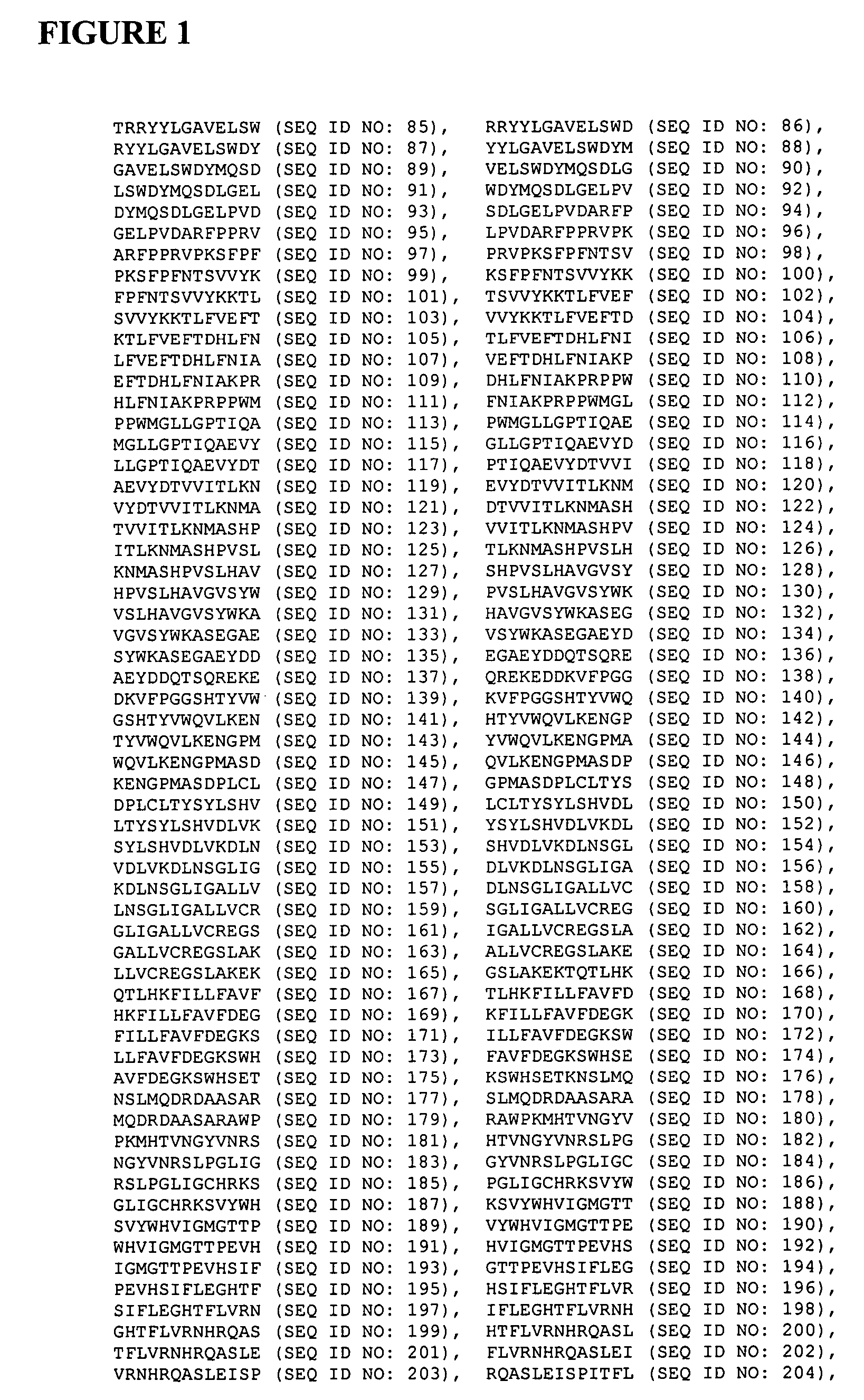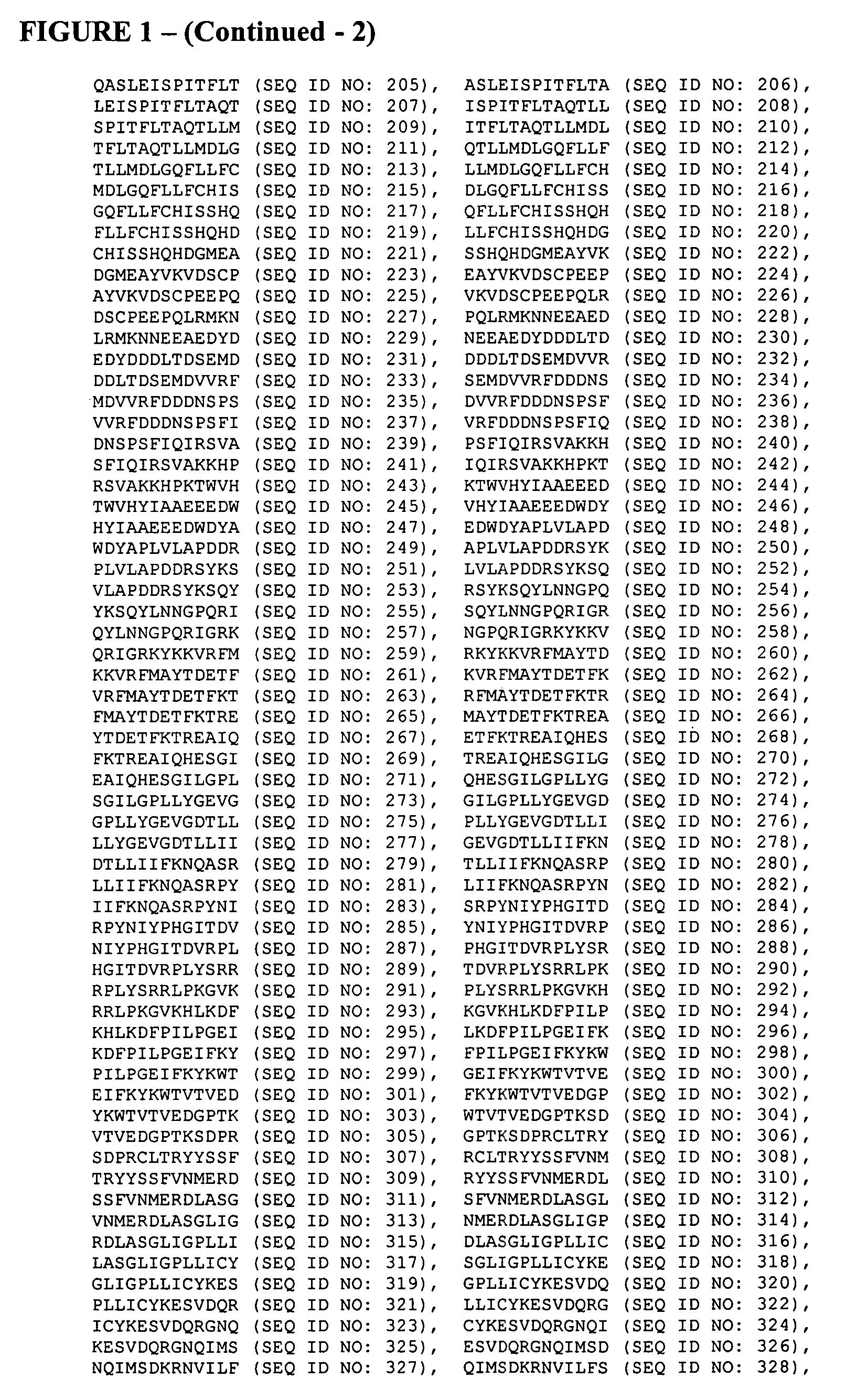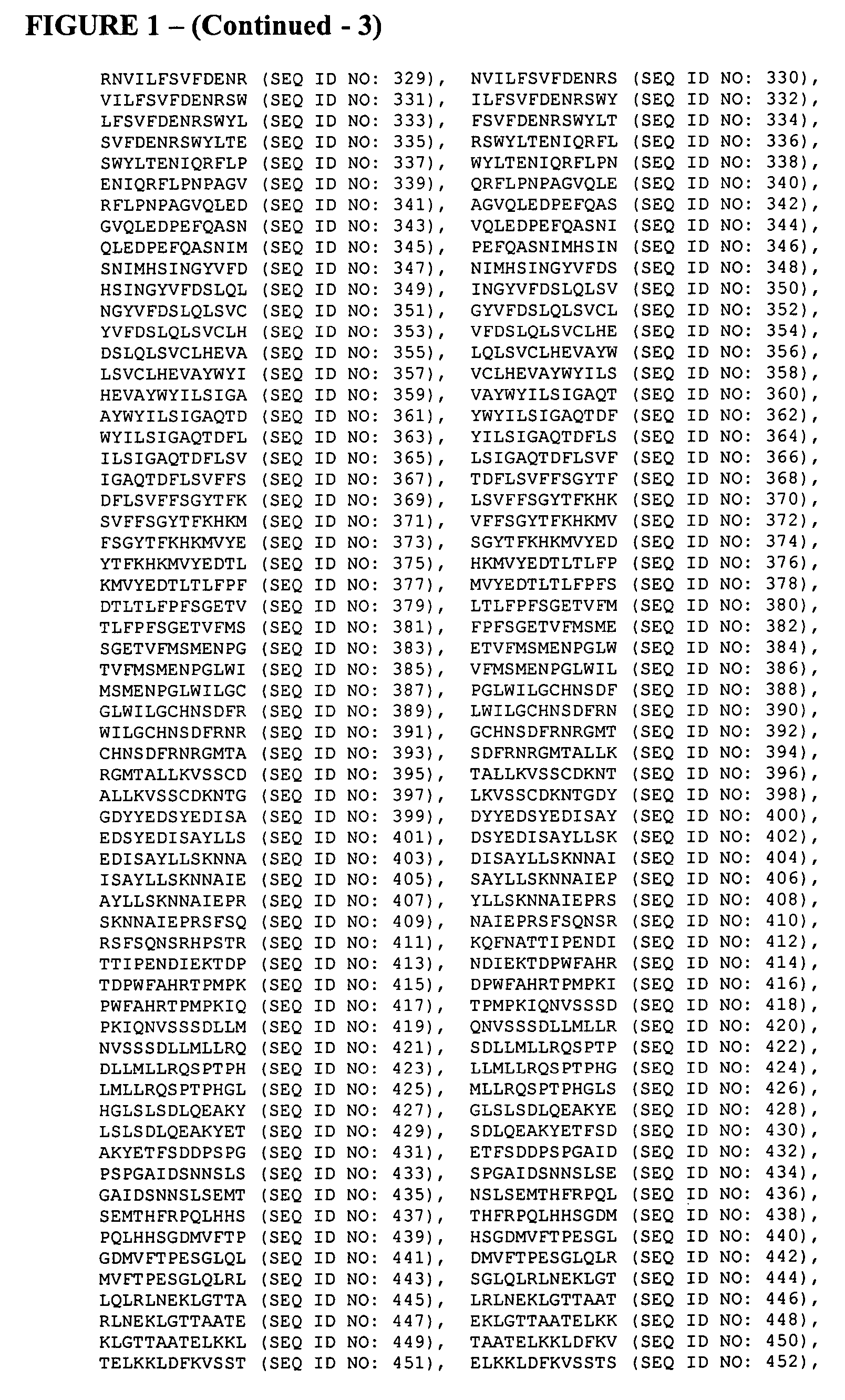Modified factor VIII
a technology of factor viii and modified peptides, applied in the field of polypeptides, can solve the problems of affecting the efficacy of therapy, affecting the effect of therapy, and assuming breakage of immunological tolerance, and achieving the effect of reducing the risk of toxicity
- Summary
- Abstract
- Description
- Claims
- Application Information
AI Technical Summary
Benefits of technology
Problems solved by technology
Method used
Image
Examples
example 2
Method for Cloning and Expression of Factor VIII
mRNA Extraction and cDNA Synthesis:
[0123] Human liver tissue was obtained from a hospital pathology department. The sample was diced and dispensed as 50 mg aliquots and stored in liquid nitrogen. One 50 mg aliquot was homogenised and mRNA extracted directly using a PolyATract System 1000 kit (Promega) according to the manufacturers instructions, yielding approx. 10 μg mRNA. 1 μg aliquots of mRNA were reverse transcribed in 20 μl reactions using the ImProm-II reverse transcription system (Promega) using an oligo(dT)15 primer according to the manufacturers instructions. The reverse transcriptase enzyme was then inactivated by heating to 70° C. for 15 mins.
Polymerase Chain Reaction Amplification of Factor VIII sequences:
[0124] Since a B domain deleted variant of factor VIII was to be cloned, the cDNA was amplified from the cDNA in two halves. The 5′ end of the mRNA was amplified using the following primers:
SEQ ID NO. 1 GCATCGCGCG...
example 3
[0158] FVIII derived peptides were synthesised containing mutations and tested for their continued ability to promote T-cell proliferation using an ex vivo assay. The peptides were 15mer sequences and were designed to test the substitutions I1011A or I1011T in combination with M1013K. The peptides were tested using 4 PBMC donor samples shown previously to be responsive to the wild-type peptide sequence. In all instances the mutant peptides tested were unable to stimulate proliferation with an SI>2.0. Results of this assay including allotype details of the donors and peptide sequences are shown in FIG. 8.
[0159] PBMC were stimulated with protein and peptide antigens in a 96 well flat bottom plate at a density of 2×106 PBMC per well. PBMC were incubated for 7 days at 37° C. before pulsing with 3H-Thymidine. Peptides were generated with the specified substitutions and each peptide was screened individually against PBMC's isolated from 4 healthy donors shown previously to be responsive ...
PUM
| Property | Measurement | Unit |
|---|---|---|
| immune reactivity | aaaaa | aaaaa |
| hydrophobic | aaaaa | aaaaa |
| length | aaaaa | aaaaa |
Abstract
Description
Claims
Application Information
 Login to View More
Login to View More - R&D
- Intellectual Property
- Life Sciences
- Materials
- Tech Scout
- Unparalleled Data Quality
- Higher Quality Content
- 60% Fewer Hallucinations
Browse by: Latest US Patents, China's latest patents, Technical Efficacy Thesaurus, Application Domain, Technology Topic, Popular Technical Reports.
© 2025 PatSnap. All rights reserved.Legal|Privacy policy|Modern Slavery Act Transparency Statement|Sitemap|About US| Contact US: help@patsnap.com



